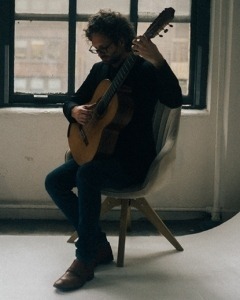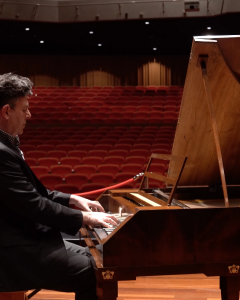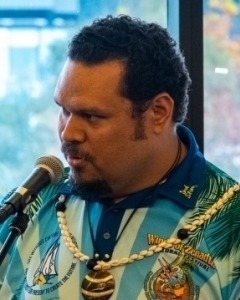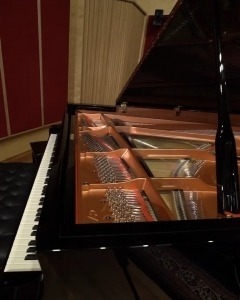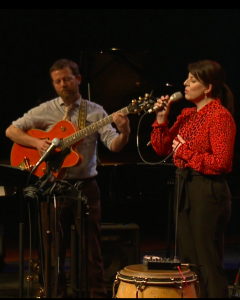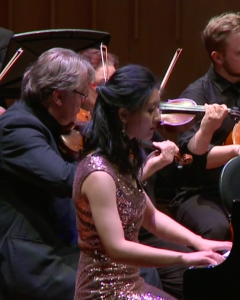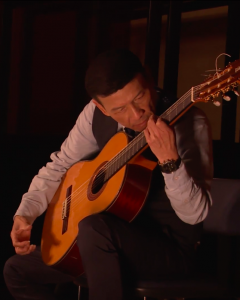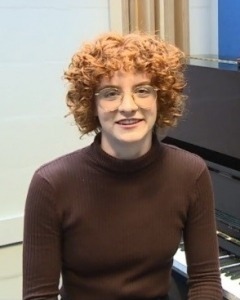Encountering the World of Music: The University’s Widening Acknowledgment of Music beyond the Western Canonic Repertoire
Encountering the World of Music: The University’s Widening Acknowledgment of Music beyond the Western Canonic Repertoire
2015 Public Lecture Series: Milestones in Music
Thursday 26 March 2015, ANU School of Music
Stephen Wild
There was a time when the ANU School of Music considered only a narrow range of musical genres and traditions as suitable subject matter for its course offerings. They included Western Church music, Western Court music, Western Musical Theatre (Opera) and Western Concert Hall music derived from middle-class tastes of the nineteenth century. The African-American genre of Jazz was the first intrusion on the Western canonic repertoire. In the late 1980s and early 1990s other traditions began to encroach on the sacred halls of academe: Asian music (introduced by Coralie Rockwell), Indigenous music (introduced by Stephen Wild), and finally now even popular music. This lecture will trace some of these encroachments and how they came about primarily in the two decades from 1990-2010.
As this Public Lecture is one in the series Milestones in Music, I have organized it in terms of milestones in the process of the School of Music’s embracing of other traditions outside the Western Canonic Repertoire.
Ten Milestones
1. 1987. National Conference MSA: Visit of Chen Ying Shi and the Shanghai Conservatorium’s Silk and Bamboo Ensemble.
Chen Ying Shi was a professor at the Shanghai Conservatorium of Music, the longest established tertiary music institution in China. His area of expertise was the tuning system of the gong orchestras of ancient Chinese courts. The study of tuning systems was a field of specialised study in China called ‘Temperamentology’, of which a leading exponent was (and still is) Professor Chen. Coralie Rockwell, a specialist music teacher in the ACT, had spent some time in Shanghai where she became acquainted with Professor Chen’s work. Coralie persuaded the Conference Organising Committee to invite Professor Chen as a Keynote Speaker to the 1987 National Conference of the Musicological Society of Australia, held at the School of Music in Canberra that year. We applied for and received funds from the Australia China Council, Department of Foreign Affairs. At the same time we received funds for the visit of a ‘Silk and Bamboo’ ensemble from the Shanghai Conservatorium; they performed a concert in Llewellyn Hall, introduced and compered by Coralie Rockwell.
Two notable facts about this 1987 conference should be commented on. Firstly, Professor Chen’s paper on the tuning system of the ancient gong orchestra was published in MSA’s journal Musicology Australia. The journal was edited in Canberra at the time, by Stephen Wild. I am fairly confident in saying that it was the first article on Chinese music to be published in Musicology Australia, and probably the first scholarly article on Chinese music to be published anywhere in Australia. Secondly, one of the pieces performed by the Silk and Bamboo Ensemble had been transcribed from Japanese sources by Alan Marett of Sydney University. Dr (later Professor) Marett was Coralie Rockwell’s supervisor of her doctoral thesis on music of the famous Dunhuang manuscripts found in a cave in Western China. The same piece was the basis of a contemporary arrangement performed at the 2013 World Conference of the International Council for Traditional music.
2. 1989. Introduction of Asian Music course by Coralie Rockwell.
Coralie Rockwell was an Honours graduate of the Department of Music, Sydney University where she was inspired by Peter Sculthorpe to pursue a research career in Asian music. She completed a Master’s degree in 1969 at UCLA’s innovative ethnomusicology program with a thesis on a genre of Korean vocal music (the thesis was later published). Returning to Australia after obtaining her Master’s degree, Coralie later received grants for fieldwork in Indonesia and further musical study in South Korea. Finally, she turned to Chinese music and spent three years in Beijing and Shanghai with her husband, Chinese linguistic scholar Michael Sawer.
Coralie had moved to Canberra to study Chinese language at Canberra University, and joined the ACT Education Department as a High School and secondary College music teacher. In Canberra she was active in the local musical scene, and in 1989 she also introduced the first Asian music course at what was then known as the Canberra School of Music. This had long-term consequences, as we shall see.
3. 1990. Introduction of Aboriginal Music course by Stephen Wild
Unfortunately, I have to talk about myself at this point. But before I do I want to pay tribute to Robyn Holmes who was Head of Musicology until the year 2000 (after that, Curator of Music at the National Library) and gave many of these initiatives, including the introduction of the Asian Music and Aboriginal Music courses, her enthusiastic support. The Aboriginal Music course was introduced in 1990 and continued to be taught by me, with one or two name changes, until 2010. (I understand that it has been taught since then by Dr Aaron Corn, Associate Professor in the School of Music, with the assistance of Indigenous Research Fellow Steve/Wanta Jampijinpa. Cross-listed in the Aboriginal Studies Program of the University, the course attracted students from anthropology, history and linguistics, the combined enrolments from these disciplines in most years being about equal to those from the Music School. The course had no pre-requisites and students from each discipline were required to learn something about the other disciplines that contributed to the course. It was particularly useful for music students to connect with other parts of the University, and to learn that musical concepts they took for granted were a mystery to other students.
For most of the period from 1990-2010 the Asian Music course and the Aboriginal Music course were alternated year by year, so that each was taught every second year. A practical component was included in each course: gamelan performance in the case of the Asian Music course, didjeridu instruction in the case of the Aboriginal Music course. Didjeridu was taught by local Aboriginal didjeridu-maker , performer and teacher Warren Saunders. At first didjeridu was taught on lengths of PVC piping, but over the years the School acquired several didjeridus by both purchase and donation, and students learned to play on real instruments. Some students purchased their own didjeridus.
At the time the Aboriginal music course was introduced I was working full-time as a Research Fellow at the Australian Institute of Aboriginal and Torres Strait Islander Studies (AIATSIS) in Canberra. Successive Principals of AIATSIS allowed me to teach the course part-time until I retired from AIATSIS in 2001. After I retired from full-time work, I became a part-time Visiting Fellow in the School of Music.
Like Coralie Rockwell, I had studied ethnomusicology as a graduate student in the United States, in my case at Indiana University which had a rival program to UCLA. The ethnomusicology program at Indiana University was taught in the anthropology and folklore departments, whereas at UCLA it was located in the School of Music. My doctoral research was carried out in the central Australian Aboriginal community of Lajamanu in the Northern Territory where the University’s first Indigenous Research Fellow (Steven/Wanta Jampijinpa) lives. (He was a child during my doctoral field work from 1969 -1972.) Later, as a Research Fellow at AIATSIS, my field research extended to Arnhem Land on the north coast of the Northern Territory.
4. Establishment of Coralie Rockwell Foundation and purchase of Indonesian Gamelan.
At the same time that Coralie Rockwell was introducing the first course in Asian music, she began campaigning for the Music School’s purchase of an Indonesian gamelan orchestra. Gamelan performance had been introduced to Western tertiary music education at UCLA where Coralie had been a student, and had since been taken up by Australian universities, Sydney and Monash Universities being the first. The Canberra School of Music was dragging the chain! By the time of Coralie’s passing not much progress had been made in raising funds for the purchase, and in honour of her efforts and contribution a group of her friends formed the Coralie Rockwell Foundation, aimed primarily at realizing her gamelan dream. A few years later a gamelan was purchased as a joint project with the Asian Studies Faculty and with a grant from the University. Subsequently, with the help of Pak Soegito, gamelan teacher at the Indonesian Embassy, and Amrih Widodo, lecturer in the Asian Studies Faculty and professionally trained Javanese dancer and musician, gamelan performance was included in the Asian Music course taught in the Music School by Dr Hazel Hall. Like Coralie, Hazel was a specialist music teacher in the ACT Education Department. She was a graduate of Monash University where gamelan performance had been taught since the 1970s.
In later years of the Asian Music course, Chinese instrumental music was added to the practical component. The School had acquired a collection of traditional Asian musical instruments from the visit of Li Minxiong, the visit of a Korean traditional music ensemble (on both occasions traditional instruments were donated to the School) and from the musical instruments collection of Coralie Rockwell which her husband, Michael Sawer, also donated to the School. The main problem was to find teachers for the instruments. At the same time, the number of Chinese students studying at the University, from Southeast Asia, Hong Kong, Taiwan and the People’s Republic, was gradually increasing, and a number of them played traditional musical instruments. A Traditional Chinese Music Ensemble was formed, some members playing their own instruments and others the School’s instruments. The ensemble was officially associated with the School, and the School even agreed to purchase more instruments from China. Members were pressed into teaching their instruments to students in the Asian Music course, thus Chinese traditional music was added as an option to gamelan performance, led for a time by Nicholas Ng, an Australian-Chinese PhD student in the School. year.
The accumulation of non-Western performance ensembles began to gather momentum. Gary France, Head of Percussion, purchased a set of West African drums for the School and began to introduce African and Latin American percussion ensembles to the School’s course offerings. Ruth Lee Martin, Head of Musicology, introduced a World Music Choir. Students could choose to take a World Music course, a performance course in any of the traditions we taught. It became a tradition to mount a World Music concert each year to enable these several sources of musical diversity to showcase their skills and achievements.
5. 1993. Visit of Li Min Xiong, Silk and Bamboo concert at University House
After the visit of Chen Ying Shi in 1987 and in the same year, I was invited (quite independently of Chen Ying Shi’s visit) to a UNESCO conference on traditional music in Beijing. After the conference I travelled by overnight train to Shanghai where I had been invited to visit the Shanghai Conservatorium. While in Shanghai I delivered a lecture on Australian Aboriginal music to the Shanghai branch of the Chinese Musicians’ Association. It was the first of several lectures and papers I delivered at Chinese institutions and at Chinese conferences over a number of years, some of which were published in translation in Chinese journals. While there, I met Li Min Xiong, a professor of traditional Chinese percussion at the Shanghai Conservatorium. There was beginning to develop a relationship between the ANU School of Music and the Shanghai Conservatorium.
On his retirement, Li Min Xiong contacted the School of Music seeking a Visiting Professorship to enable him to introduce Chinese percussion performance to students here. With her usual enthusiasm, Robyn Holmes obtained funding from the Australia-China Council, with whom we had established a relationship over the visit of Chen Ying Shi and the legacy of Coralie Rockwell. During his visit of a few months in 1993, Professor Li Min Xiong taught traditional Chinese percussion to a class of percussion students, leading to a public concert of Silk and Bamboo musicians made up of Chinese musicians from Sydney, Melbourne and Adelaide, in addition to the School of Music students, and conducted by Li Min Xiong. The concert was held in the Great Hall of University House and recorded and later broadcast by the ABC. Contrary to our worst fears, the Great Hall was packed to overflowing – there was obviously an eager audience in Canberra for music beyond the usual Western concert fare. Included in the audience was Professor Deane Terrell, the newly appointed Vice Chancellor and a faithful supporter of the School of Music both during his Vice Chancellorship and still today. Everyone at the School of Music is grateful for Deane Terrell’s unfailing support for all its efforts.
The young student who accompanied Li Min Xiong as his interpreter, Yu Hui, later studied at another institution in the United States famous for its World Music program, Wesleyan University in Connecticut, where he completed a PhD. Professor Yu Hui is now Head of the College of Arts at Ningbo University, near Shanghai.
6. 1995 ICTM World Conference and development of relationship with National Folk Festival.
The seeds of the 1995 World Conference of the International Council for Traditional Music (ICTM) being held in Canberra at the School of Music were sown in 1988. To celebrate the Bicentenary of British settlement of Australia in 1788, the Federal Government funded the Fifth Pacific Arts Festival in Townsville, Queensland in August 1988. This festival is held every 4 years in different places in the South Pacific. Associated with the Festival was an ICTM Colloquium, “The documentation of Music and Dance and Its Use in the Living Tradition”, with emphasis on traditions of Indigenous Australia and the South Pacific. It was organized by Dr Alice Moyle, former Ethnomusicology Research Fellow at AIATSIS in Canberra, and Dr Helen Lawrence, a specialist in Cook Islands music and dance who later was appointed a lecturer in musicology at the School of Music at ANU. Dr Lawrence was then based at James Cook University in Townsville. Dieter Christensen, Secretary General of ICTM, attended the Colloquium and visited Canberra on his way to an International Musicological Society symposium in Melbourne. He immediately picked Canberra and the School of Music as a suitable site for a future ICTM World Conference.
The ICTM conference was officially hosted by the Musicological Society of Australia, the School of Music providing the venue – for a charge. The School’s official involvement was rather reluctant: the conference was charged quite a high fee for the use of the School’s facilities, and the welcome speech by the Director was decidedly lukewarm. But the general staff provided a wonderful service, catering for morning and afternoon teas, meeting the audio-visual requirements of the conference, arranging media coverage, organising flowers for Opening and Closing Ceremonies in Llewellyn Hall, and much else. Robyn Holmes again rose to the occasion, enthusiastically embracing the conference and oiling the organizational wheels of the School. We formed a Local Arrangements Committee and hired a conference organizer to look after finances and registrations, Only someone who has been closely involved in organizing a large international conference knows how much there is to do. The conference was a great success: delegates from over 40 countries converged on the School of Music which became known throughout the world of traditional music scholarship. For many ICTM World Conferences subsequently, the 1995 conference was the benchmark of conference organisation.
Two organisations outside the ANU made huge contributions to the success of the conference: the Australian Institute of Aboriginal and Torres Strait Islander Studies (AIATSIS) and the National Folk Festival. AIATSIS contributed $25,000 toward the mounting of a traditional Aboriginal ceremony (Rom) by performers from Arnhem Land in the Northern Territory. The total cost of this event was $60,000, the balance of which local events organizer Andy Greenslade raised – she also managed the whole event, brilliantly. The ceremony was performed in three different locations on three consecutive afternoons: the National Library foyer, Kings Hall in Old Parliament House, and the grounds of the old Acton House (now totally redeveloped) which were occupied by AIATSIS. The impact of the ceremony on the conference delegates was incalculable but certainly very great: it was one of the highlights of the conference. AIATSIS generously provided assistance in several other ways, including my own time and that of a project officer to assist me. I would like to be able to say that this resulted in a strong link between the School of Music and AIATSIS, but the relationship was never seen as very important by the School, at least during my active association with the School of Music.
The conference was held in January, a few months before the Easter weekend when the National Folk Festival is held annually. The Festival organisation agreed to organize all of the performance events associated with the Conference (except for the Rom ceremony), including applying for grants, arranging venues, and liaising with performers and performance organisations. The events, collectively a Festival of Traditional Music, included a traditional Greek performance at the Hellenic Club in Woden, a traditional Indian music and dance performance at the National Gallery, an Indonesian Wayang Kulit (Shadow Puppet) performance at University House, a Chinese concert at the Performing Arts Centre at ANU, and a contemporary Aboriginal music and dance presentation at Llewellyn Hall. The Conference dinner was held at the Yarralumla Woolshed where the Australian folk group Wongga Willi Band and Wongga Willi Colonial Dancers performed and led delegates at a Bush Dance; delegates were treated to a BBQ with Australian wine. The Conference Dinner was a roaring success. This connection between the School of Music and the National Folk Festival developed in subsequent years including some Festival workshops held at the School and a forum of the ICTM Colloquium on Laments held at the Festival.
7. 2000 Introduction of non-historical course structure
Nicolette Fraillon was Director of the School of Music from 1998 to 2002. She had spent some years in Europe and came to the School from the position of Music Director and Chief Conductor of the National Ballet of the Netherlands. While Director of the School she continued her conducting career with assignments with the Western Australian Ballet Company, the Western Australian Symphony Orchestra, and others. Nicolette left the School to become the Music Director and Chief Conductor of the Australian Ballet, a position she still holds.
As a very dynamic Director, Nicolette re-energised the School after a period in the doldrums. With strong support from Robyn Holmes, Head of Musicology, Nicolette re-designed the School curriculum, focusing on topics rather than historical periods. Each semester, a focal topic would be announced, such as “Music and Patronage” or “Music and Politics”. The core musicology courses, studio teaching, and public performances addressed the topic of the semester. This curriculum design achieved two important results: the integration of performance and musicology teaching, two aspects of the School’s activities that were often seen to be at loggerheads; and the expansion of the students’ horizons to embrace other music than Western classical forms. “Music and Patronage” and “Music and Politics” were just as much a part of the Indonesian musical scene, or the Chinese, or the African, or Australian folk music as it was in Western classical music culture. Music could be seen to have similar features across a wide range of cultures and across different classes of people. Western classical music could be seen as another example of a universal phenomenon. It was a cultural approach to music, rather than historical. It emphasised diversity within cultural parameters, rather than an upward line through time from “Ancient and Primitve Music” (as one of my student textbooks proposed) to the present, excluding any music that didn’t fit this narrative.
The new curriculum was a bold, innovative experiment. There were criticisms, of course. One was just conservative: students were left with a bewildering array of musical diversity and no overarching pattern. The answer to this was that indeed, this was the purpose of the exercise, that student’s assumption of a single historical narrative would be subverted and they would be encouraged to see things in their true diversity. Another criticism was more concerning: it was very time-consuming of staff hours because teaching had to be prepared
from scratch every semester. It was this consideration that eventually killed the experiment, after Nicolette had left the School. However, I like to think that its impact was long-lasting and that the somewhat authoritarian and ‘received’ historical narrative of a single musical tradition was permanently subverted.
8. 2000-2010. Development of Graduate Research Program
When I retired from AIATSIS and became a Visiting Fellow at the School of Music, I expected to spend 10 years or so writing and publishing, along with a little bit of teaching. Instead, shortly after I began Robyn Holmes left the School to become Curator of Music at the National Library. One of her roles in the School had been Graduate Convener, responsible for the complete postgraduate program. In that role, Robyn had created the structure for both coursework postgraduate degrees (Graduate Certificate, Graduate Diploma, Master of Music) and research degrees (Master of Philosophy and Doctor of Philosophy). Nicolette asked me to take it over on a half-time appointment. I lasted in the position for about a year before giving it up because it took up too much time and it was not what I expected to be doing. However, I remained actively involved in the graduate research program as a supervisor, and in 2006 The Dean of the Faculty of Arts, Adam Shoemaker, asked me to resume the position of Graduate Convener. I remained Graduate Convener until 2010.
When I began as Graduate Convener in 2000, the School had graduated one PhD candidate, Ruth Lee Martin. By the time I stepped down from the role for the second time, the School had a thriving graduate research program, with over 20 students at any one time (a few Master’s students, mostly PhD students). Students could enroll for research degrees in Musicology, Composition, Performance, Music Pedagogy, or Aural Theory. The largest number of candidates pursued projects in Musicology and Composition. The Musicology projects were extraordinarily diverse: sources of music and dance of the “new” Japanese religion of Tenrikyo, music and identity in Singapore and Malaysia, reception of Slovak folk music and dance in Melbourne, music and identity on Ogasawara Islands of Japan, Chinese religious music in the Australian diaspora, institutionalization of Icelandic folk songs, film music of expatriate Australian composer Arthur Benjamin, Fijian Christian chant, women in Australian folk music, music and dance of an Australian Aboriginal festival, contemporary Aboriginal women’s music in Sydney, contemporary performance contexts in Australia of Renaissance music and dance. Other research projects supervised partly in the School but primarily located in other graduate programs elsewhere in the University included one on music of the Southern Highlands of Papua New Guinea, Mongolian music, performance genres of northeastern Afghanistan, traditional vocal music of Bunun Aboriginal people of Taiwan, and several on Australian Aboriginal .music. Most of the students carrying out projects partly supervised in the School of Music participated in the graduate research seminar held weekly in the School. All of these projects were supervised, in whole or in part, by the two Visiting Fellows in the School: Dr Hazel Hall and myself. Today, I’m happy to say, there are two ethnomusicologists on full-time regular appointments, Dr David Irving, a specialist in Southeast Asian music, and Dr Aaron Corn, a specialist in Australian Aboriginal music.
9. 2006-2011: Hosting of ICTM Secretariat: ICTM Board meeting, International Symposium on ICH, International Symposium on Laments, International symposium of the ICTM Study Group on Music and Dance of Oceania.
With the strong support of the Dean of the Faculty of Arts, Adam Shoemaker, and with the approval of the Vice Chancellor, the School of Music, under John Luxton as Head of School, agreed to host the Secretariat of the International Council for Traditional Music (ICTM), from 2006-2011. I was appointed Secretary General by the Executive Board of ICTM and Lee Anne Proberts was appointed the Executive Assistant – it was Lee Anne who did most of the hard work. ICTM was first established as the International Folk Music Council (IFMC) in 1947 in London as part of the post-war establishment of international organisations mostly under United Nations auspices. IFMC/ICTM was a founding member organization of UNESCO and remains affiliated and actively involved in UNESCO to this day. IFMC changed its name to ICTM in 1981 to recognize its broader reach beyond primarily European folk music to embrace musical traditions of all countries and genres. Today it has official representation in over 100 countries and regions worldwide. The presence of the secretariat in Canberra placed the ANU School of Music in the minds of scholars in this field worldwide.
Several events associated with the Secretariat being held in Canberra stand out. In February 2008 the Executive Board meeting was held at the School, coupled with an International Symposium on Intangible Cultural Heritage also held at the School, an Asia Pacific Regional Conference on Memory of the World held at the National Library, and an ANU Public Lecture held at the National Museum. The UNESCO Convention on Safeguarding the Intangible Cultural Heritage (2003) aims to safeguard, ensure respect for, raise awareness of and provide international cooperation and assistance for the safeguarding of intangible cultural heritage (ICH) worldwide. ICH is defined as performing arts, oral narratives, languages, arts and crafts, and knowledge systems. ICTM is one of the major International NGOs active in the workings of the ICH convention. However, Australia has not formally adhered to the convention. The Memory of the World Program of UNESCO (1992) aims to preserve, assist access to and increase awareness of the world’s documentary heritage. UNESCO recognizes an Australian National Committee and an Asia-Pacific Regional Committee (one of only three in the world). Thus there was a major difference between the two meetings: delegates to the ICH Symposium could only express opinions as members of ICTM, whereas delegates to the Memory of the World Conference represented their countries and the region as a whole. Nevertheless, the two entities, Memory of the World Program and Convention for the Safeguarding of the Intangible Cultural Heritage, have many interests in common, both being concerned with the safeguarding of cultural assets. Most of the delegates to the smaller ICH symposium were speakers at the Memory of the World Conference, and the events were closely coordinated. Since the ANU, through the School of Music, and the National Library were the host institutions of the two events, they were closely engaged in planning and executing the week’s international activities. The ANU Public Lecture that week was delivered at the National Museum by Wim Van Zanten, Vice President of ICTM, As Professor Van Zanten was ICTM’s representative to UNESCO on Intangible Cultural Heritage his lecture focused on current issues of the workings of the Convention.
For one week in February 2008 the School of Music, the National Library and the National Museum were the centre of world attention on two important cultural programs of UNESCO.
Two other international events were associated with the hosting of the ICTM secretariat. The first was a Symposium of the ICTM Study Group on the Music and Dance of Oceania, combined with the annual School of Music post-graduate Symposium, 28 September -
1 October 2010. The theme of the Study Group symposium reflected the School’s connection with both the ICH convention and the Memory of the World Programme, namely, “Tangible Records of the Intangible: Collecting Musical and Choreographical Culture in Oceania”. Delegates came from Australia, Papua New Guinea, New Zealand, United States, Canada, Samoa and American Samoa. Dr Don Niles, Director of the Institute of Papua New Guinea Studies delivered an ANU Public Lecture titled, “Audiovisual Archives: Researcher’s Delight or Just a Tease?”.
The second event was an ICTM Colloquium on laments, titled, “One Common Thread: A Colloquium on the Musical Expression of Loss and Bereavement”, 20-22April 2011. An ICTM Colloquium is attended by invitation only and is intended as an intense discussion of a single topic over a few days. Participants came from the United Kingdom, United States, Finland, Malta and Australia. The colloquium began with an evening public event, a conversation with renowned Australian collector and folk musician, Rob Willis, on the topic, “Laments from the Bush: Is Waltzing Matilda a Lament?”. The remainder of the colloquium offered a variety of formats including keynote addresses, roundtable discussions, formal paper sessions, concerts and a Public Forum on the topic at the National
Folk Festival. Overlapping with the National Folk Festival provided an opportunity not only for delegates to attend this event, but also to join the National Folklore Conference held at the National Library. The Laments Colloquium, as we commonly called it, not only drew international visitors to the School but also linked the School to two other institutions in Canberra, the National Library and the National Folk Festival. It also resulted in the publication of the papers in a special issue of Humanities Research, journal of the Research School of Humanities.
10. 2009, 2011: International visitors from Hong Kong and Nanjing.
The School of Music’s growing reputation as a research centre of diverse musical traditions led to two international scholars choosing the School as a host institution for their research in Australia. In 2009 Tsai Tsan-Huang was awarded an Endeavour Fellowship for research on the Chinese musical heritage of Australia, and he chose to base himself at the ANU School of Music. Dr Tsai was an Assistant Professor in Music at Chinese University of Hong Kong. One of his research interests is musical instruments, particularly Chinese instruments, and the role of museums in relation to instrument collections. His development of a database on Chinese musical instrument collections in Australia led to a second research project on the history of the Chinese instrument collection in the Bendigo Museum in Victoria, and its role in the Bendigo community today. The second project was hosted by the ANU Research School in Humanities and the Arts. Today, Dr Tsan teaches in the Department of East Asian Studies at ANU.
Dr Zhou Yan-Hui is a Professor of Ethnomusicology at Nanjing Normal University, Peoples Republic of China. In 2011 he received a grant from the Chinese Government to spend 6 months in Australia to study Australian Aboriginal music, and chose the ANU School of Music as his host institution. During his visit he was able to accompany a PhD student in the School on a field trip to a remote Aboriginal community in the Northern Territory. While at the School Professor Zhou assisted the ANU Chinese Music Ensemble, particularly tutoring in traditional Chinese flute (dizi) and the Chinese reed instrument sona in which he is an expert, and he performed in the annual World Music concert.
Conclusion
Thus, in a period of about 20 years the ANU School of Music gradually embraced musical traditions outside the Western canonic repertoire. The World of Music impacted the School, and at the same time the School of Music impacted the World of Music. It has now embraced popular music, which I applaud, and also Southeast Asian music, which I also applaud. There are some who may consider that this embracing of the World of Music has been at the expense of the Western classical tradition. To the extent that this is the case it wasn’t intended. The aim was to broaden the musical horizons of students, to be open to all traditions, not to arbitrarily exclude any. No School of Music can embrace all traditions, but surely those of Australia, particularly our Indigenous traditions, and those of our region should not be excluded.






